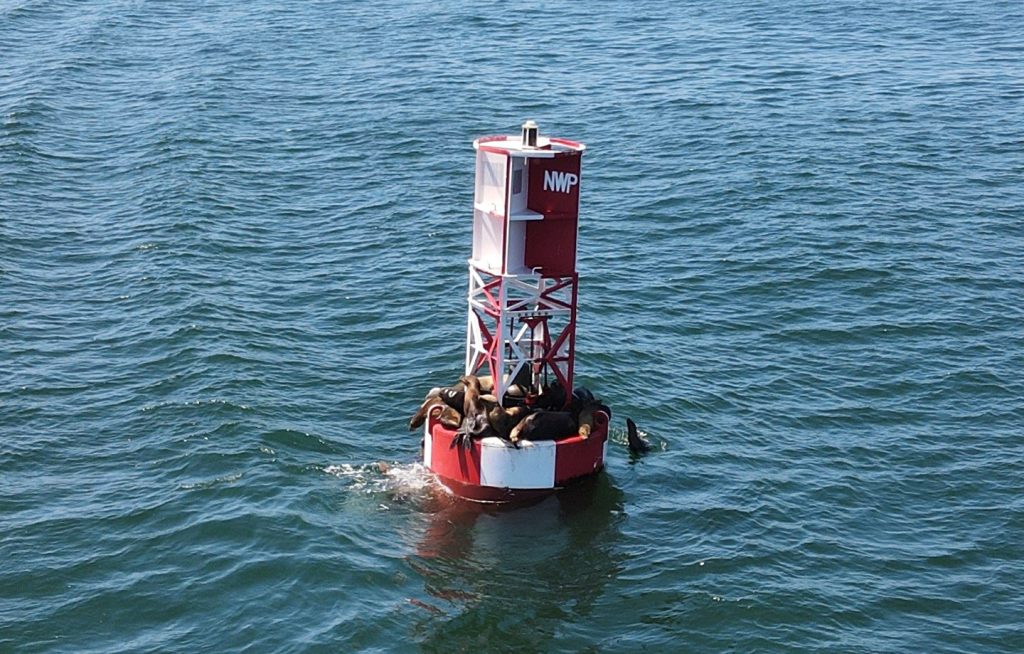
In the aqueous world of local pinnipeds, it’s known as the NWP “hotel.”
To mariners, however, it’s the red buoy marking the entrance to yacht-rich Newport Harbor. On foggy days, the swell-generated clang of its bell guides in those who are without radar. Perhaps just as a reliable as that sonic signal are the various sounds blared out by reclining sea lions that have lunged atop the buoy to sun themselves and rest.
Neither vacationers to a Waikiki beach at high season (the world’s most crowded beach), nor sardines in a can, could be any more packed together than these sea lions. To successfully thrust upon the buoy, one has to be first, or be the biggest, in order to claim a spot. Among the first “words” any young sea lion doubtlessly learns if it wants to claim a space is “smushed.”
To approach the buoy from downwind, no radar or bell is necessary to home in on, for if your nose is working, you’ll find the NWP buoy.
To most people, the many vocal blurts from sea lions is simply just annoying noise, especially from those animals that can’t find space on the buoy, so instead choose home-front docks or moored boats on which to lounge…and communicate.
There are those who find sea lion noise of interest; they’ve learned through whatever it takes to become a PhD what those vocalizations mean. So now, because of this short article, no grad school degree is necessary:
Sea Lions blow out a variety of vocalizations, according to Supportwild.com. Those include barks (similar to those made by dogs), growls, and a combination of bark and whistle. As humans have nonvocal gestures or sounds, seal lions, too, offer up nonvocal noises, such as clapping their jaws, slapping their flippers on the water and honking through their nostrils. These noises vary depending on species, gender and individuals.
Barks are issued for communicating with other sea lions or warning off predators.
Throaty growls are used when they are threatened or when they become aggressive.
Whistle-barks may convey information about one’s identity or location.
Flipper slapping may be an invitation to play, while nasal honking might translate to “Here I am.” That doesn’t work well in any of Newport’s trendy taverns.
More complex vocalizations may be used to attract or seduce females, or indicate territory or dominance status. (No wonder my squeaky voice never attracted the cheerleaders.)
It’s assumed that many of sea lions’ vocalizations also express emotions and intentions. For most of us, sea lion language is about as incomprehensible as trying to master
Mandarin Chinese or Finnish from a condensed mail order course. But when you stand on the sand to embrace the sea, or when you sail out of the harbor, stop your engine or luff the canvas for a moment to listen to the barks and growls and honks. You may just learn a new language.
